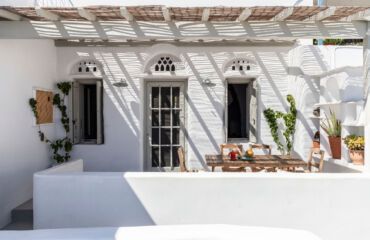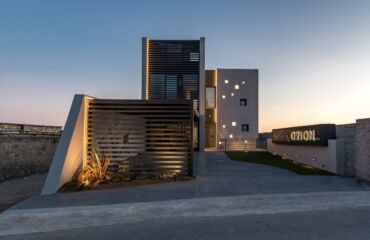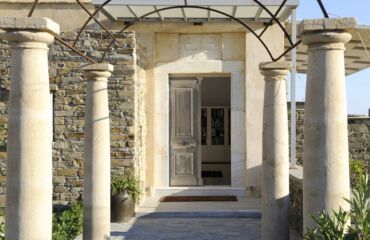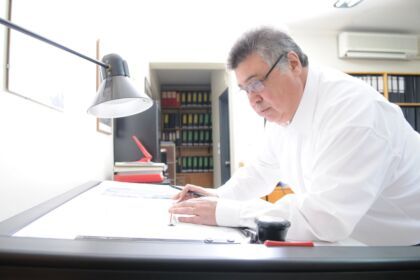
Costas Isageleas: He builds the future, looking further
There’s always a bet, every time you design and build something. Whether it’s a private residence, a hotel complex or a public work. The building should not only be harmoniously integrated into its environment by highlighting a unique aesthetic. It should also adapt to the needs of its user by clearly responding to its requirements. So the construction should be as beautiful and functional on the inside. This is what Anegersis is known to do for years. And we hope they continue this way their creative constructions in Athens and the Cyclades.
>With their experienced staff of qualified engineers, and at the helm a man with a deep vision, truth and talent, Costas Isageleas, they undertake the carrying out of every project from square one and deliver it to you turnkey.
Certified with ISO 9001, and featuring in their porfolio projects of different profiles (from kindergarten to lighthouses) but also in different areas in Greece, we were enchanted by the ornamental reconstructions that adorn our island and we bring you together to learn more about the man behind the lights of the company.
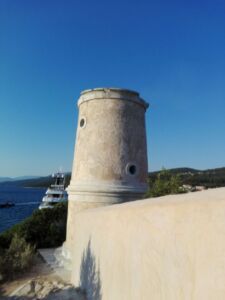
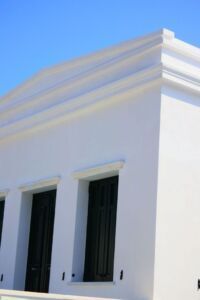
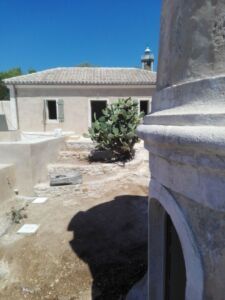
1. Mr. Isageleas, talk to us a little about your motivation regarding infrastructure or reconstruction projects in Tinos and more specifically in Pyrgos and Panormos.
Mr. Isageleas: The Technical Company has two distinct areas of employment. The first is public works and the second is architectural designs and constructions of private works. The aim of the Company in both areas of activity is the delivery of a quality and at the same time utilitarian work. In the field of public works having constructed projects of different profiles, a great deal of experience has been gained in the treatment and resolution of special constructions and mainly in liquid and solid waste management projects but also in the restoration and redevelopment of preserved structures using specialized technical aids.
In Tinos
We have constructed public infrastructure constructions (hydraulic works) and many building projects. I consider the emphasis on the construction of infrastructure projects a necessary condition for the development of the island that will help both the development of the island and the amelioration of its residents’ life. Our motivation is the love for the island and the passion for a quality result.
Tinos lacks basic infrastructure but at the same time it is necessary to redesign and modernize the existing ones. (road network, solid and liquid waste management projects, water projects, port projects, etc.) An important tool for further rational spatial planning is the completion of the study of PSROOC (Plans for Spatial and Residential Organization of Open Cities) , for the region but also for the whole island of Tinos which, while it has been launched for years and I have helped too as a consultant, it hasn’t been completed yet due to the known bureaucratic problems that have afflicting the country for years. The reason why it is necessary for the above to be done is obvious for a European country. They contribute to the sustainable development of the place that has been adopted at all levels of spatial planning and the importance of the specific characteristics that govern insularity.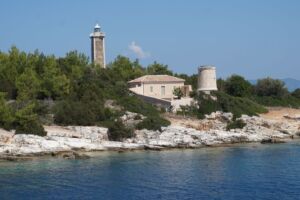
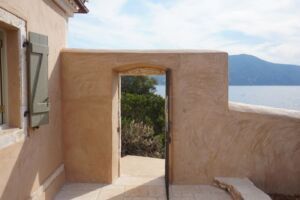
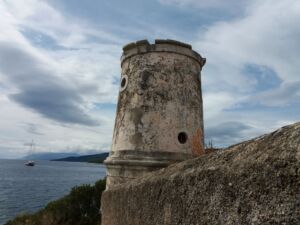
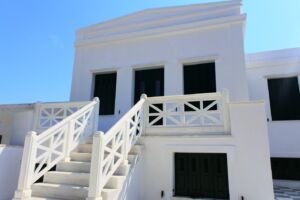
2. What is it that, in your eyes, makes Pyrgos and Panormos special areas?
Mr. Isageleas: In order to explain what makes these areas special to me, I think it will take many pages to explicate it thoroughly as it is a unique love affair for this place and I do not think I will be objective, but there is one answer that encloses all my feelings. LIGHT-STONE -SEA-HISTORY. The island of Tinos will be unique and as it floats for millennia over the Aegean Sea, it carries the light that melted the wings of Icarus, the air that did not blow on the sails of Jason and the stone that carved as a child in an alley of Pyrgos, Halepas or Philipppotis.
3. How consistent is traditional architecture with the modern legislative framework? Have you encountered any difficulties in the projects you have attempted on our island so far?
Mr. Isageleas: I think that a modern state mechanism has never been acquired by Greece for reasons that are well known. The Legislature tried to pass several interesting laws to protect our cultural heritage. Actually for the traditional settlements of Tinos the first law was passed in 1979 and helped to save them intact from strange interventions in the sweeping 60s and 70s and more laws, that helped in this direction, followed. The difficulty, however, is the application of these laws. They have to do with urban issues and concern services that were almost non-existent. Also the control mechanisms making their own judgment, the assimilation of laws by local communities and the ability of scholars to respond.
In my opinion, in the case of Tinos all of the above worked. But most importantly it helped the fact that in the critical decades I mentioned (60s and 70s) the wonderful traditional settlements of the island had not been discovered yet by general public, as the majority of visitors stayed in Chora, where most of the traditional buildings were destroyed in those decades. Moreover, the artistic sensitivity of the Tinian and the existence of good craftsmen and marble layers helped to preserve the character of the island.
4. What should the foreign visitor, who steps on our island for the first time, know? Can the buildings really “talk” about what Tinos and its inhabitants are?
Mr. Isageleas: Tinos is its History, its culture, its landscape, the architecture of its wonderful settlements, the art of marble in Exo Meria, its paths, it’s the set of images and pictures that will affect the visitor who comes willing to discover it but also to be helped through the efforts of the local community and its agents to discover the other Tinos, wherever its villages emerge, unexpected white presence in the arms of stone, the mansculpted by the stubborn human soul, with a secret inner rhythm, that emerges like a bright ripple in the path of the wind.
In Kardiani the dream is tilted lulled by the purl of the spring water to reward the shimmering of the sea’s eternal saltiness. Isternia’s houses still climb towards the timeless observatory of light blue travels. In Pyrgos, the chisel never stopped resonating in the cobbled streets. As you walk through them, you will always discover a new artifact that you have never noticed. A detail that Halepas or Philippotis might have carved in time.
A fleeting shade in the light of Gaitis’ or Litras’ paintbrush. In Marla, summer mornings shine on the sweat of the bodies in the struggle with marble. Summer afternoons sweeten the toil by dripping a calm light in the white remembrance of the houses. Finally in Panormos, at night the glimpses of the planet’s lantern embroider the moist darkness with an old handmade painting, inconceivable and intimate at the same time hovering in the soul of the world.
As for the houses…
…they can clearly talk about their place. After all, houses are the shells of the souls of those who inhabit them. They coexist with people, they are born, live and die with them. The houses listen to their sorrow. They wither or shine with joy through their dark or bright windows that are the eyes of their soul. The houses exist with their people, they denote their folkways, their jobs. They whisper and sing in strange tones with the winds that blow on them. They get sick as they do not to bear abandonment.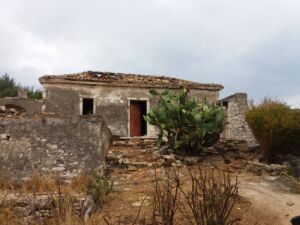
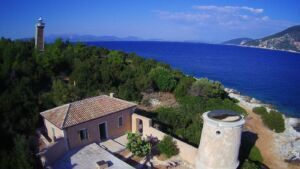
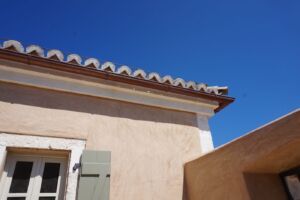
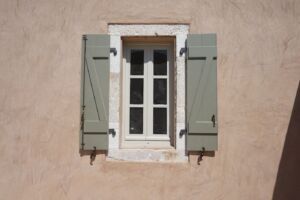
5. Would you like to tell us a few more about your own tourist accommodation?
Mr. Isageleas: It’s about tourist furnished houses, approved by the E.O.T. and specifically it’s about 5 studios, 4 suites, 6 apartments and one villa.
Each residence is independent, with comfortable spaces and full equipment.
The houses follow the terrain, creating elegant volumes that are fully in harmony with the architectural elements of the Cyclades. They have unobstructed view to Panormos bay. Also the islet “Planet”, as well as the surrounding hills with the walls. The scattered white chapels and the stone remnants of old windmills. The complex features a swimming pool and lounge bar.
6. How much do you think that the “handmade” island of Kastoriades needs infrastructure projects from companies of your own profile? And what is your vision regarding the Cyclades and more specifically Tinos?
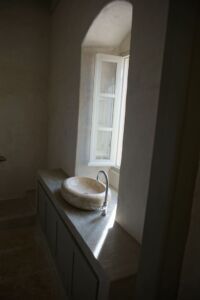
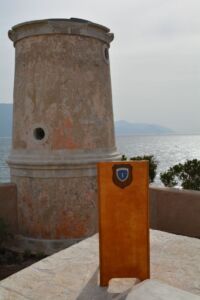
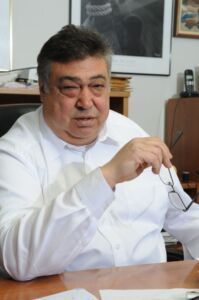
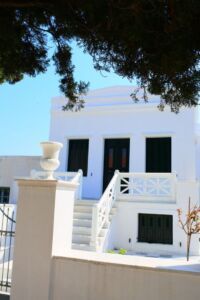
Mr. Isageleas: Tinos needs infrastructure projects always on a human scale and with respect to its environment. The design must be done following a design plan prioritized. Also, in response to a development goal that responds to what development we want the place to have. Tinos wants projects that can help highlight its mainland, its culture, projects that will shield it from severe weather effects. It needs energy upgrade projects highlighting the gentle forms of renewable energy sources with special attention to their location so as not to cause visual and aesthetic pollution.


 Ελληνικά
Ελληνικά 